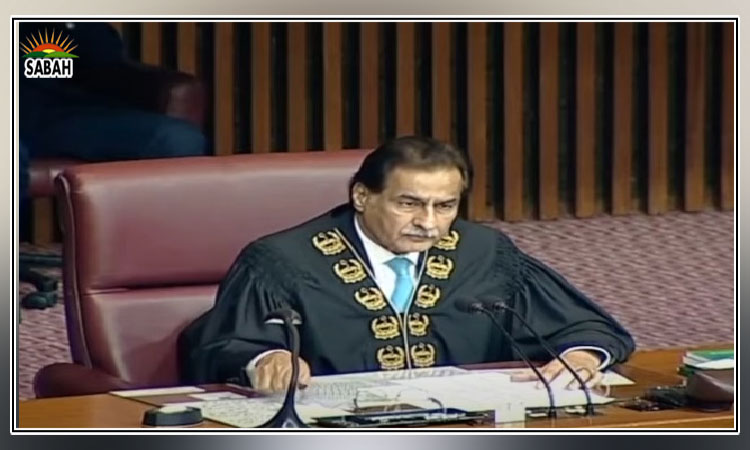A meltdown in 2023?..Dr Imran Khalid
The sudden collapse of Silicon Valley Bank (SVB) is the recent crisis to hit the global financial system. This unfortunate turn of events has reminded me of two events that caused economic havoc on a massive scale in the past: the 1997 Asian financial crisis and the 2008 Great Recession. These twin disasters triggered a ripple effect that was felt across the world, plunging nations into economic disarray.
Now, the disconcerting and precipitous downfall of three major American banks Silicon Valley Bank, Silvergate Bank, and Signature Bank within a single week has sent shockwaves across the world. This sudden turn of events has prompted deep-seated concerns about the dependability of the US banking system, and increased fears of a possible domino effect that could trigger a widespread crisis across the financial sector.
Among the three banks, Silicon Valley Bank which primarily catered to startups stands out as the largest banking failure since the 2008 financial crisis, and the second-largest in US history. Prior to its collapse, SVB had amassed a staggering $209 billion in total assets and approximately $175.4 billion in total deposits, ranking it as the 16th largest bank in the nation.
Despite efforts by US President Joe Biden and US regulators to reassure Americans that their banking system and money are safe, the reality that American banks are currently facing unrealized losses of over $600 billion paints a murky picture of this sector. Many are questioning the role of the Federal Reserve in this saga. Concerns abound that the recent spate of bank failures in the US may have set in motion a chain reaction of bank runs.
Many financial analysts believe that the catalyst behind the sudden collapse of these banks could be the Federal Reserves unyielding pursuit of interest rate hikes over the past year. These soaring interest rates had a cascading effect, leading to the closure of the initial public offerings market for many startups and driving up the cost of private fundraising. Silicon Valley Bank with its focus on catering to technology, life science, and healthcare clients, all of which are crucial players in the venture capital ecosystem found itself particularly vulnerable to these market vicissitudes.
SVBs over-reliance on this particular client profile had put it in harms way, increasing its exposure to significant risks. The collapse of SVB has drawn scrutiny to the hazards that financial institutions face due to the Federal Reserves assertive measures aimed at combating inflation. In a high-rate environment, bonds experience a decline in value as yields increase. Last year, US benchmark 10-year yields skyrocketed by over 200 basis points, and in February alone they surged by almost 40 basis points, preempting the renewed expectations for interest rate hikes.
The bitter reality is that the Federal Reserve is grappling with a predicament of its own making. It maintained a zero interest-rate policy for seven years, without planning for its eventual end at some point of time. However, the bonds acquired during that period depreciated as interest rates increased, and these rates did not increase gradually. The Federal Reserve raised interest rates to an unprecedented level, causing significant difficulties for developing businesses.
Currently, the US is witnessing how these rate hikes affected the assets of American citizens. Another factor to consider in this crisis is the role of regulation. Ironically, Silicon Valley Bank was among those leading the charge to relax bank regulations for small and mid-tier banks, and they succeeded in 2018 during the Trump era. While having regulations in place may not have completely prevented the crisis at Silicon Valley Bank, it would have required them to have a risk management system in place and alerted them to the problem much earlier.
Now, many small US banks are also facing an SVB-like situation. Additionally, the high US dollar interest rates are causing capital outflows from emerging markets, and several countries are experiencing higher debt costs, which could potentially lead to financial crises in some regions. US banks have grown accustomed to a low interest rate environment over the past decade. As a result, the US Federal Reserves aggressive interest rate hikes since March 2022 have made banks like SVB more vulnerable.
Although the turbulence in the US banking system resulting from the abrupt failures of Silicon Valley Bank and Signature Bank appears to be easing out, the commotion combined with uncertainty in the market regarding the Federal Reserves interest rate policies and persistently high inflation will likely continue to undermine the trust of US depositors and create a growing sense of uncertainty across the globe as well.
Over 14 years have passed since the 2008 financial crisis, but the US financial system has not learnt anything after that episode and is still plagued by confusing loopholes. The regulation and oversight of US banks and other financial institutions continue to be problematic. It is still too soon to determine whether other US market participants will follow in the footsteps of the trio and shut down this year. Compounding the issue, the impact of the failing US banks appears to be spreading to Europe with Credit Suisse, a banking behemoth, receiving an emergency infusion of $54 billion in liquidity from Switzerlands central bank to stay afloat.
Investor unease is unlikely to abate in the coming weeks, as many experts are warning that this could merely be the first stage of a domino effect. Furthermore, there may be additional hidden risks lurking within the financial system that have yet to be exposed, especially following a swift rise in interest rates by the US Federal Reserve and other Western central banks over the past year. For example, the European Central Bank recently elected to increase the eurozone’s benchmark rates by an additional half-point, a move that is expected to create significant economic strain and place a tremendous financial burden on banks.
The US Fed also recently hiked the federal funds rate by 25 basis points, further intensifying the pressure on the US economy and its financial system. The ongoing chaos in US financial markets is further compounded by the worrisome undertone of an impending banking crisis, as persistent inflationary pressures loom large.
Courtesy The News












